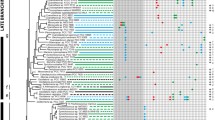Abstract.
Cyanobacteria produce numerous and structurally diverse secondary metabolites, in particular nonribosomal peptide and polyketide structures. Various bioactivities could be assigned to these compounds, and some may prove useful either for development into commercial drugs or as biochemical research tools. Microcystin, a worldwide common cyanobacterial hepatotoxin, was the first metabolite whose nonribosomal biosynthesis could be confirmed by knock-out mutagenesis. The microcystin synthetase complex consists of peptide synthetases, polyketide synthases, and hybrid enzymes, and reveals a number of novel enzymatic features, signifying the potential of cyanobacterial biosynthetic systems for combinatorial biochemistry. Recent studies have shown the presence of peptide synthetase genes and polyketide synthase genes within a number of cyanobacterial genomes. This knowledge may be very valuable for future screening projects aimed at the detection of new bioactive compounds.
Similar content being viewed by others
Author information
Authors and Affiliations
Additional information
Received revision: 1 August 2001
Electronic Publication
Rights and permissions
About this article
Cite this article
Dittmann, .E., Neilan, .B. & Börner, .T. Molecular biology of peptide and polyketide biosynthesis in cyanobacteria. Appl Microbiol Biotechnol 57, 467–473 (2001). https://doi.org/10.1007/s002530100810
Received:
Accepted:
Issue Date:
DOI: https://doi.org/10.1007/s002530100810




